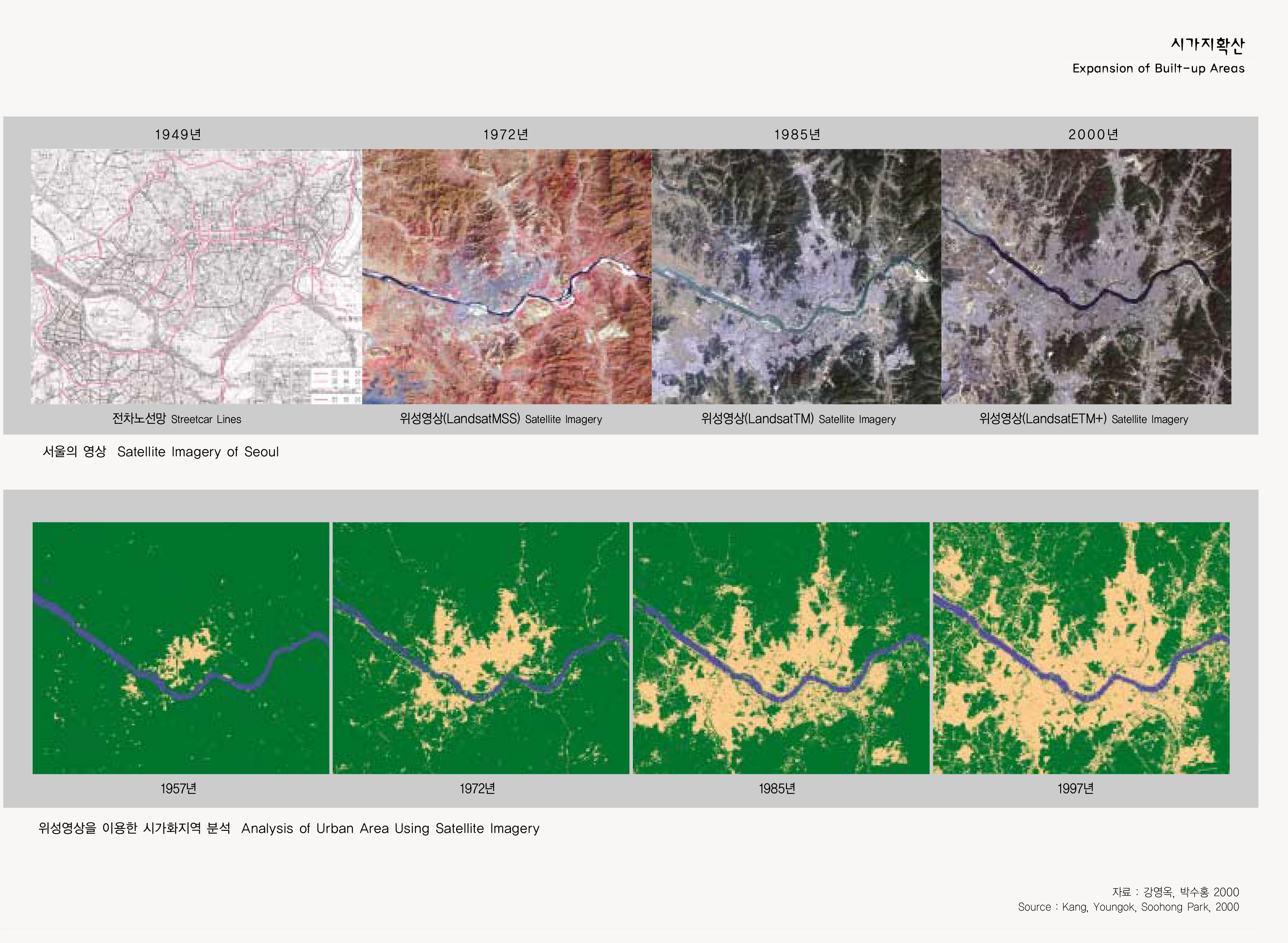-
역사
시가지 확산
-
시가지확산
조선시대 서울은 4대문 성곽내부로 시가지가 국한되어 있다가 19세기 후반 근대적인 교통수단인 철도와 전차궤도가 건설되기 시작한 후 평면적 시가지 확산이 시작되었다. 본격적으로 시가지가 확산된 것은 1963년 행정구역 확장과 함께 급속한 산업화를 경험하면서 부터이며, 대규모 토지구획정리사업으로 시가지의 확산이 가속화되었다. 1960년대~1970년대는 대규모 시가지 개발로 도시팽창과 교통문제가 악화되던 시기라 할 수 있으며, 1980년대 들어 서울은 도심위주의 단핵도시에서 강남, 여의도 및 영등포 등을 축으로 하는 다핵도시구조로 바뀌었으며, 시가지 확산은 서울의 시경계를 넘어 수도권으로 광역화하고, 서울내부에서는 빌딩들이 고층화되면서 밀도가 높아지게 되었다.
Expansion of Built-up Areas
Seoul during the Choson period was restricted to the inside of the four gates of the fortress surrounding it. From the late 19th century, with the development of modern transportation means of railroad and streetcars, Seoul began its horizontal expansion.
It was with the 1963 administration district expansion of Seoul, that rapid industrialization, and large-scale land subdividing projects that the expansion of Seoul began in earnest. From the 1960s through 1970s was the period of largescale city developments that brought the byproducts of outgrowing city expansion and traffic problems. In the 1980s, Seoul was changed from a single-centered city to a multicentered city having Gangnam (south of the Hangang River Region), the Yeouido, and Yeongdeungpo region. Seouls expansion continued over city boundaries into a metropolitan area, highrises filled the downtown area and its sub-centers of Seoul, and the area came to be an area of high-density high-rises.
출처 : 강영옥, 박수홍 2000

